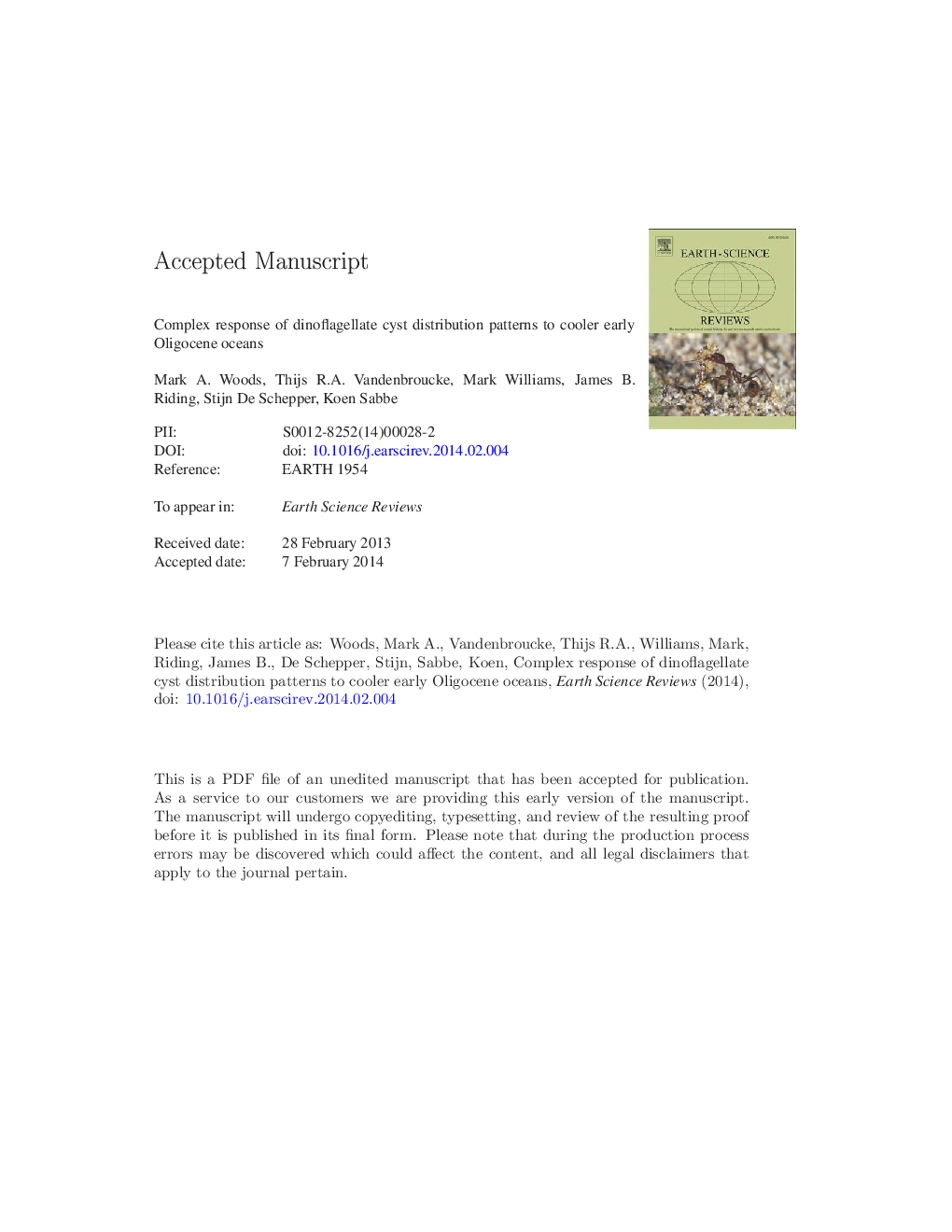| Article ID | Journal | Published Year | Pages | File Type |
|---|---|---|---|---|
| 6443049 | Earth-Science Reviews | 2014 | 63 Pages |
Abstract
Rupelian dinoflagellate cyst distribution may reflect changes in a range of environmental variables linked to early Oligocene climate-cooling, for example changes in nutrient fluxes triggered by glacially-induced base-level fall; complex reorganisation of ocean current systems between the Bartonian and Rupelian, or muted changes to Rupelian summer SSTs in the northern hemisphere that have previously been reported. Many extant dinoflagellate species also exhibit relatively broad temperature tolerance. Moreover, they have potentially extensive cryptic diversity, and are able to produce dormant cysts during short-lived environmental deterioration, all of which may act to limit the value of undifferentiated dinoflagellate cyst assemblages for identifying climate signals.
Related Topics
Physical Sciences and Engineering
Earth and Planetary Sciences
Geology
Authors
Mark A. Woods, Thijs R.A. Vandenbroucke, Mark Williams, James B. Riding, Stijn De Schepper, Koen Sabbe,
